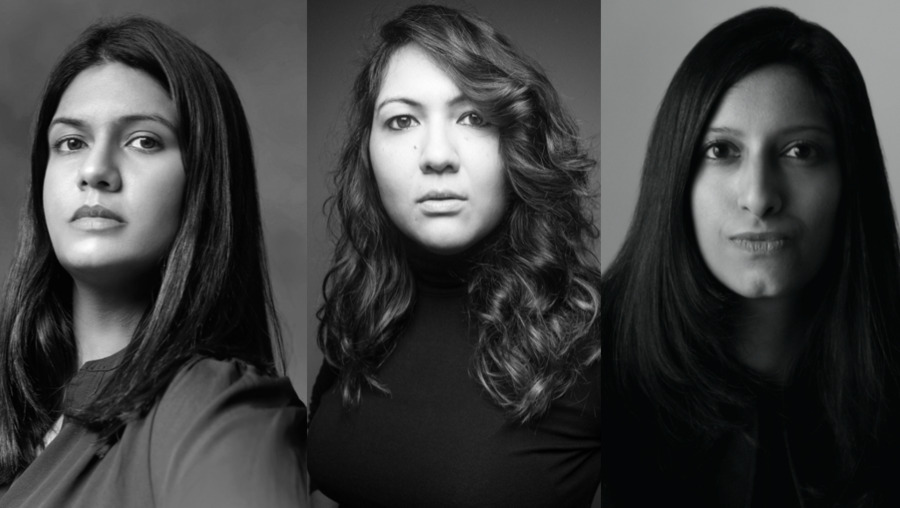(Left to right): Kartiki Gonsalves, Sonam Nair, Vasudha Rungta
cM: Can you share your journey as a director?
SN: I grew up in a small town in West Bengal and immersed myself in books, movies, and bike rides with friends. When it came to choosing a career, I knew it had to be writing or filmmaking. I studied literature and filmmaking in New York, taking on various internships in casting, production and as a receptionist to break into the TV and film industry. Upon returning to India, I worked with Ayan Mukerji and Vishal Bhardwaj on “Wake Up Sid” and “7 Khoon Maaf,” gaining invaluable experience. I wrote my first film, “Gippi,” which Ayan introduced to Karan Johar, leading to my directorial debut. Since then, I’ve been directing in various formats.
cM: Can you share a significant challenge you faced on your journey and how you overcame it?
SN: After my first film didn’t do well commercially, I faced self-doubt and disbelief from others. A subsequent film got shelved, and it made me question everything. I believed no one would want to work with me again due to a lack of commercial success. To overcome this, I transitioned to web-based content where I didn’t have to worry about box office numbers. My short film “Khujli” on YouTube garnered acclaim and awards, boosting my confidence and guiding me towards a new path of creating content for smaller screens, free from box office pressures.
cM: Do you have a favourite among your works? If so, what makes it special to you?
SN: My first film, “Gippi” holds a special place in my heart. It was made with innocence and served as an ode to my own childhood experiences. It stands out as my purest work because I didn’t employ any specific techniques or strategies during its creation. Subsequently, I’ve become more conscious of intricacies and manipulations required in filmmaking.
cM: Transitioning to OTT can be dynamic. What advice do you have for budding directors?
SN: It was the best thing for me because I prioritise connecting with people through my storytelling, regardless of screen size. My advice: choose the medium that fits your stories, don’t chase commercial success, and embrace all mediums equally; there’s no hierarchy.
cM: How do you ensure a cohesive vision when working with writers, actors, and crew?
SN: I choose to work with people I like and who share a genuine passion for the project. I want everyone involved to be excited about it. While I value input, I trust my instincts and make decisions aligned with my core beliefs. This helps maintain a cohesive vision despite the multitude of perspectives involved in the process. Ultimately, following my instincts is key in keeping everything on track.
cM: Have you observed changes in the portrayal of female characters in recent years?
SN: Yes. We’ve moved beyond the simplistic narratives of female empowerment and perfection. It’s refreshing to witness complex, flawed women on screen, representing the diverse spectrum of human experiences. Female characters are now more authentic and multi-dimensional, which is truly exciting.
cM: Achieving greater inclusivity in the film industry is a shared goal. What steps do you think are essential to promote inclusivity and provide more opportunities for female directors in India?
SN: I believe that inclusivity starts from the top. When producers, directors, or network executives are women, it paves the way for more female heads of departments, a diverse cast, crew, and richer roles for female characters. Personally, I prioritise working with women, finding their energy comfortable and valuable on set. Leadership roles held by women naturally lead to broader inclusivity throughout the production team.
cM: As a woman in a leadership role, your success is inspiring. Can you recall a moment when you felt your achievements empowered and encouraged other women in the industry?
SN: Women often battle self-doubt that can hinder their progress. I’ve encountered this when working with young ADs, art assistants, stylists and more. I constantly urge them not to limit their ambitions and to take bold steps. I share my filmmaking journey to illustrate that it’s entirely feasible for a young woman to pitch and create a film. Do not stop yourself.
